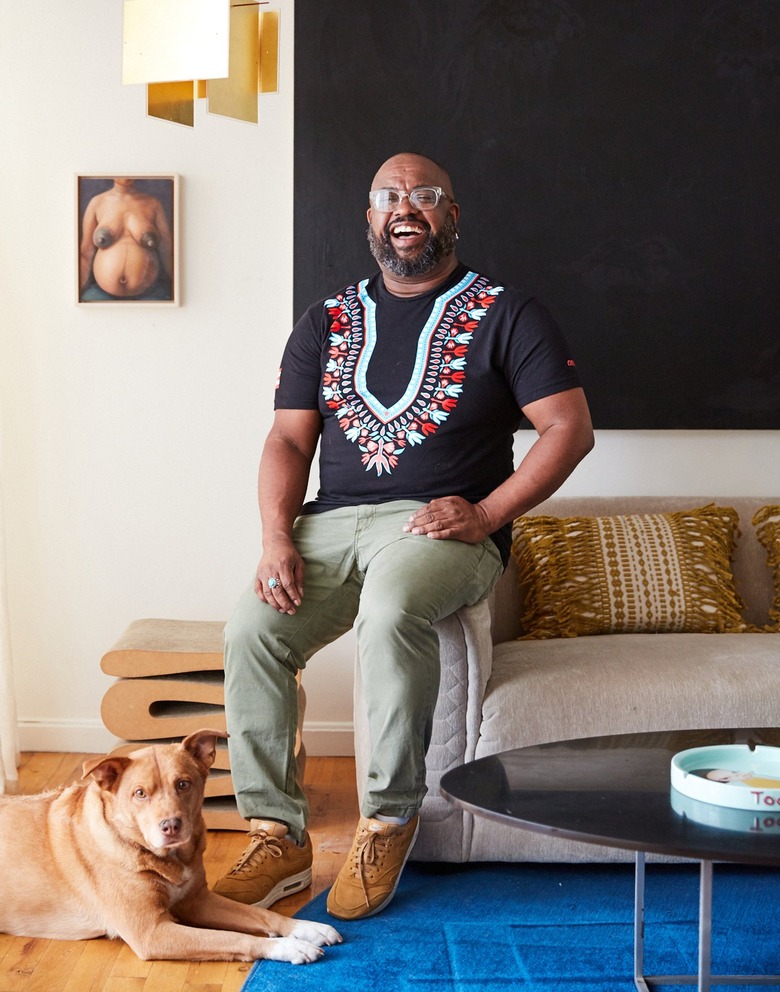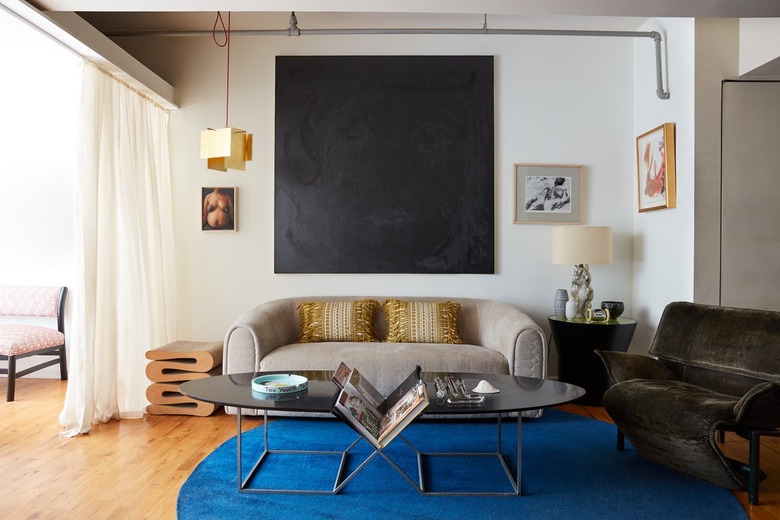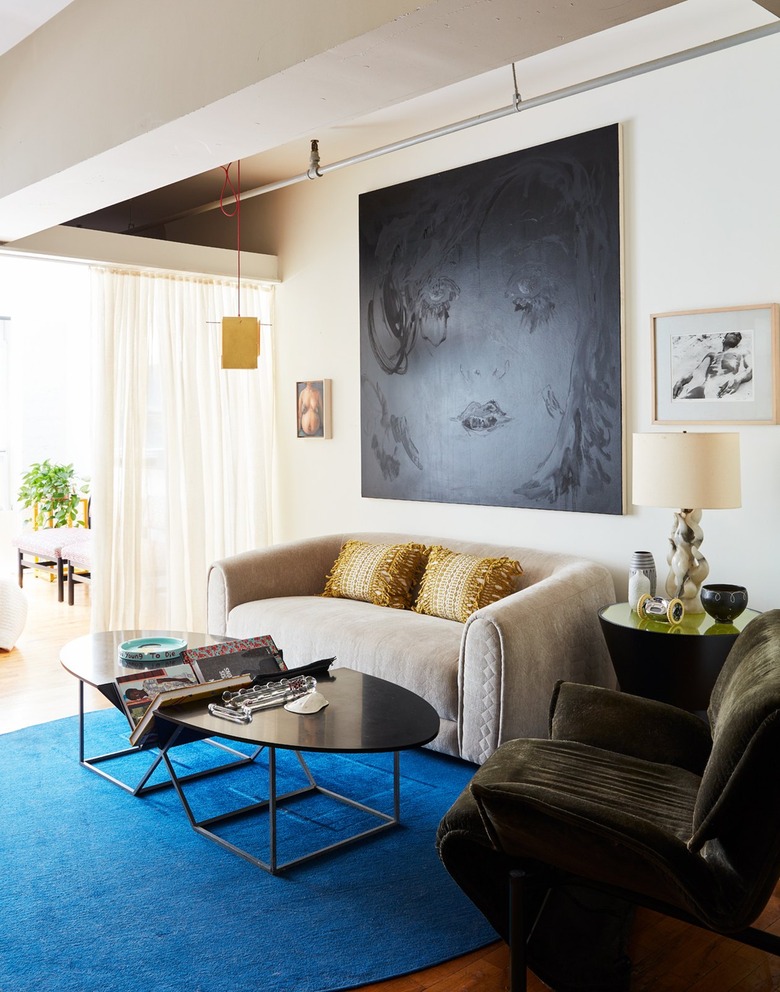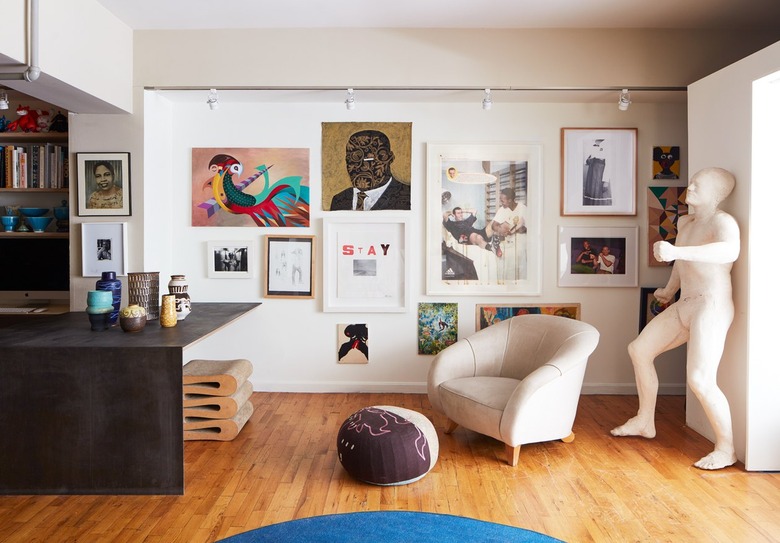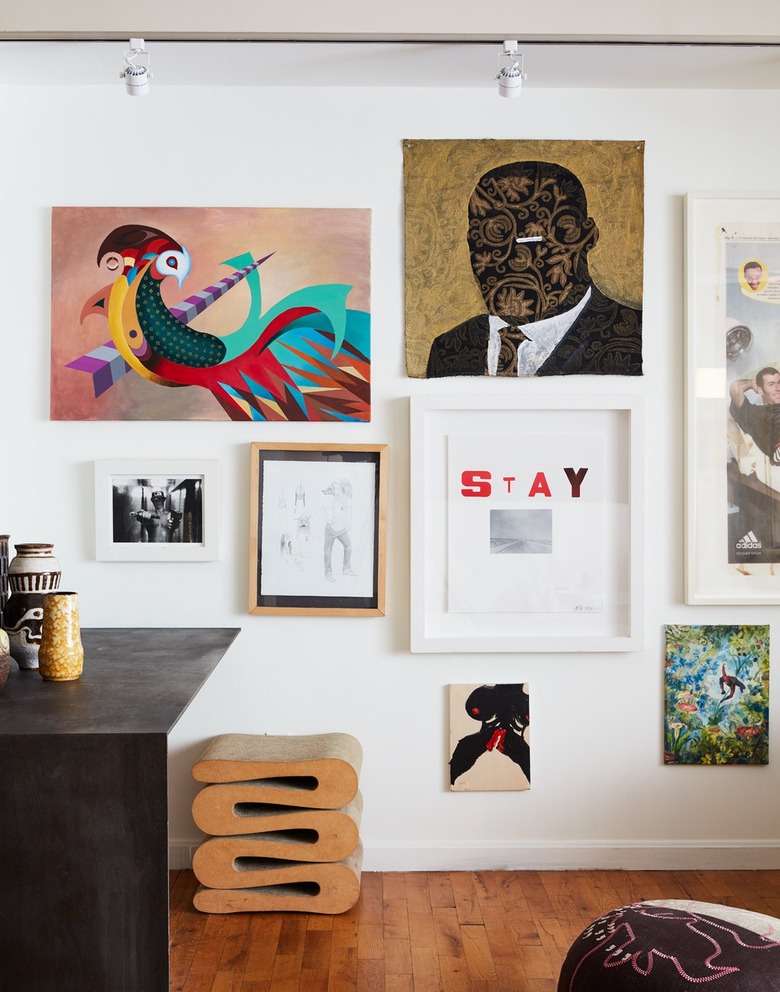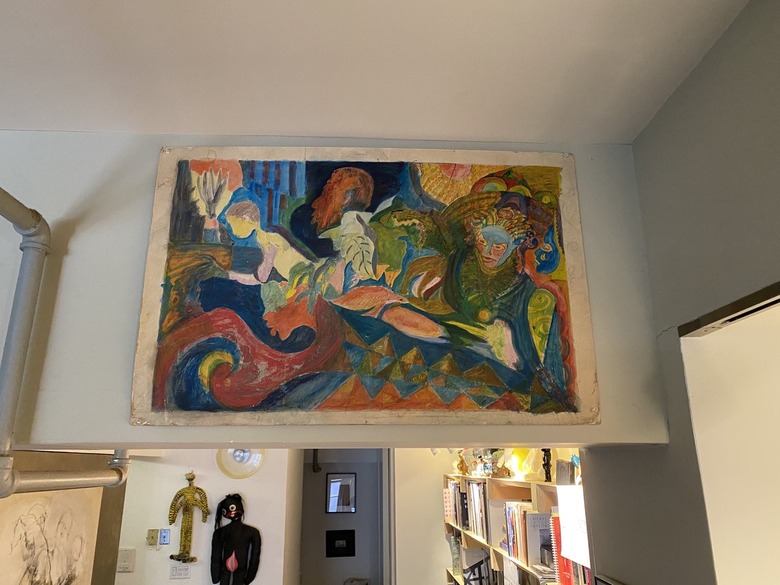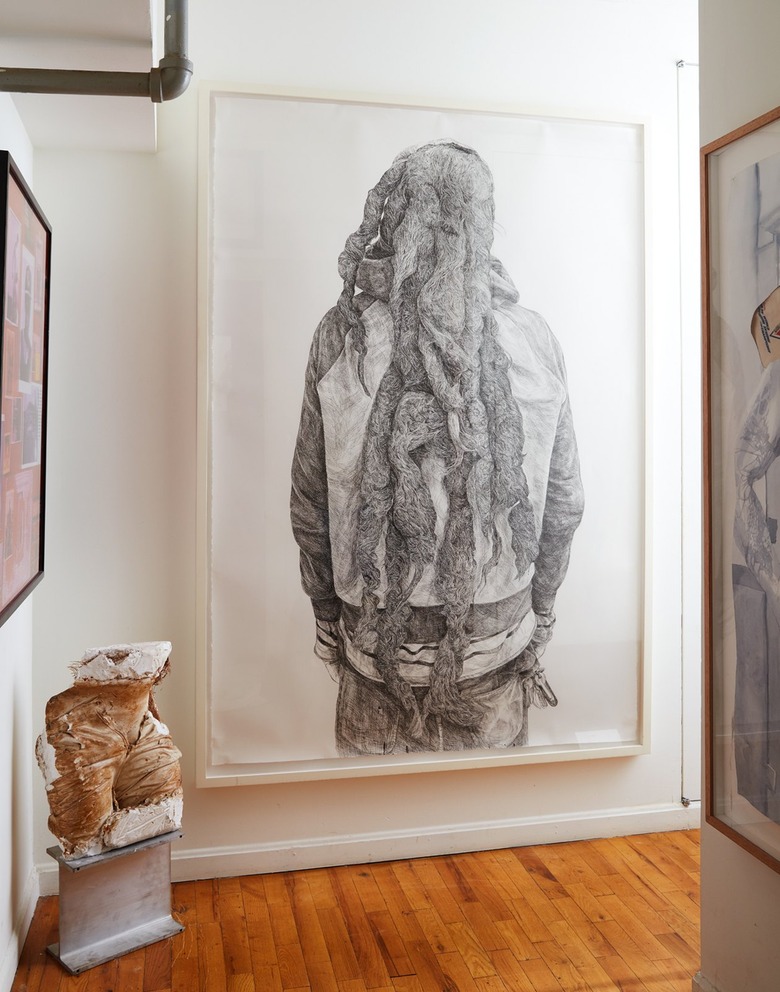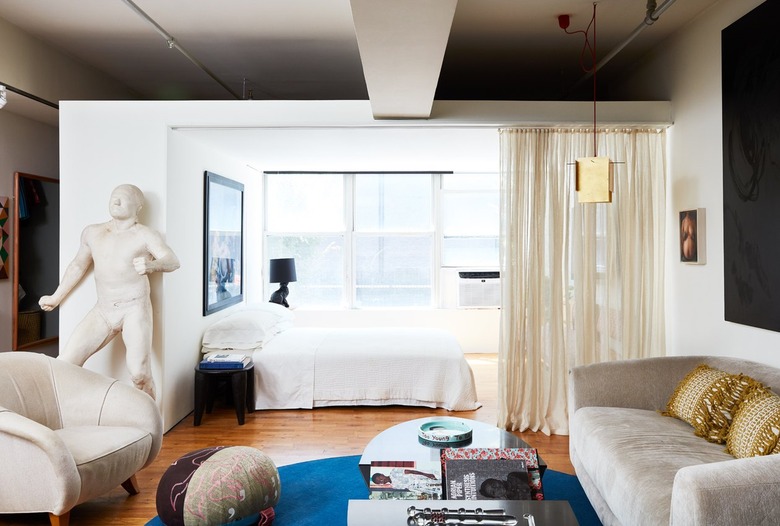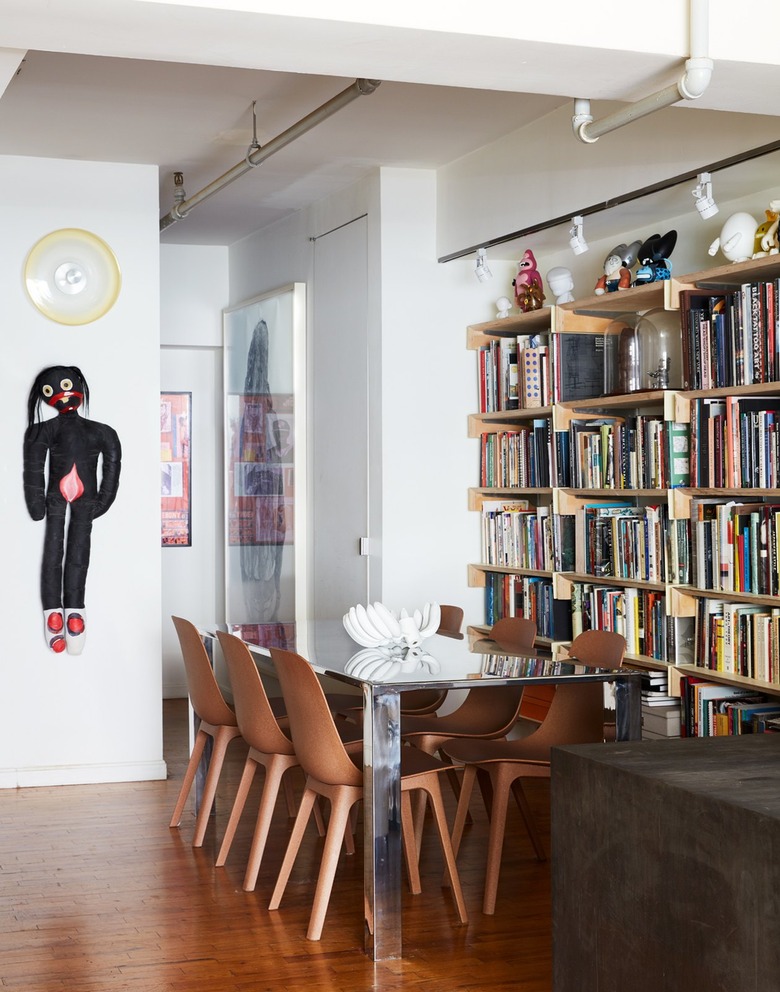Hunker Down With Interior Designer Leyden Lewis
One of the trickiest parts of interior design is balancing form and function, especially when it comes to our homes. We want them to look like the interiors found in the glossy pages of our favorite shelter mags, but we also need them to leave room for ... well, life. From eating to sleeping to entertaining to working, our homes need to be multifunctional, stylish, and authentic to our personality. That's not too much to ask, right?
Well, not if your name is Leyden Lewis. This Brooklyn native, and exceptionally talented interior designer, has seemingly unlocked the secret to stylish, multipurpose living — regardless of the square footage. Perhaps that's a testament to growing up in New York, where making the most out of a tiny abode is pretty much an art form. Or, maybe it's just due to the 30+ years of experience that he has designing both residential and commercial projects around the globe. Either way, one look at Lewis's eclectic industrial studio apartment/office/art gallery (which he shares with his photogenic dog Nikka), it's clear that his talent knows no bounds — and I for one am definitely taking notes.
So it probably goes without saying that I was overjoyed to have an opportunity to hunker down with Lewis and learn more about what inspires him to create such beautiful interiors — including his own artfully curated home which he poetically describes as, "... my theatre for life, [it's] an expression of my love for art."
Hunker: How would you describe your design style? Have you always been interested in interior design and architecture?
Leyden Lewis: The goal of Leyden Lewis Design Studio is to create spaces of great poetic and artistic depth that inspire and elevate the senses, the spirit, and the mind. I come from a family of artists. My father is a painter and so I have been exposed to the conversation around art my whole life. My earliest introduction to design was the Metropolitan Museum of Art kids' program. What's pretty vivid in my memory are the hallways of Greek sculpture and artifacts.
Hunker: You are a founding member of the Black Artists + Designers Guild (BADG). Can you tell us a little about this organization and why it is so important?
LL: BADG is important as it is a platform for the underrepresented body of Black artists and designers within our respective industries. It is an organization that not only sheds a light on existing talent, but also promotes collaboration within the community of artists and designers.
Hunker: In the bio on your website, it says that you have 'created poetic and culturally sensitive spaces and furniture in the United States and around the world.' How do you go about doing this?
LL: I think this is a question commonly only asked to [people] of color. Everyone carries their culture with them, whatever that may be. Cultural sensitivity for me is being aware of, present in, and acknowledging the multitudes of identities and cultures that I am a part of and designing for.
Hunker: Art clearly plays a big role in your home. Can you talk about the art direction and why it plays such an integral role in your life?
LL: I have never not had art as part of my life. I grew up with art as an active conversation. I have run out of walls. My collection is a representation of myself, family, and friendships.
Hunker: How would you describe your home? Did you renovate or remodel your space in any way? If so, how? What is one feature in your home that you love?
LL: One of the challenges that [I] faced [in] my apartment [was] how to delineate space in an open studio. My favorite details [are] the creation of what I call the 'sleeping zone,' by dropping the ceiling, and the 'dressing corridor.' It was important for me to separate my bedroom from my office to create two separate environments, one that's conducive to productivity and the other [for] rest.
Hunker: Do you have anything in your home that has been handed down? Would you mind sharing the story/history behind it?
LL: I have a painting from my father that he produced in the early '80s. It was produced at a time when he was experimenting with merging the figurative with the abstract. It has a dream-like surrealist nature to it. It is gouache on paper, but it feels more like a collage.
Hunker: Who are some of your favorite artists/creators/makers/designers? Where do you find inspiration?
LL: Donald Judd, Eileen Gray, Pierre Chareau, Zaha Hadid, Sol LeWitt, Luis Flores, Lyle Ashton Harris, Derrick Adams, [and] Carlo Scarpa, just [to] name a few.
I get my inspiration from everywhere — specifically in traveling.
Hunker: If you could only do three things to transform or breathe new life into a space, what would they be?
LL: I recommend bringing light and air into [a] space. Tear down a solid wall and put up a wall of glazing, to create a more open floor plan, [and] use color instead of walls to delineate space. Generally, I prefer single-floor living environments — it's like institutionalizing a private space.
Hunker: Do you have any design-related pet peeves or faux pas that drive you crazy?
LL: Trends, taste, no chintz.
Hunker: Since we have all been staying at home more than ever over the last year, do you have any tips on how to make our living spaces healthier?
LL: Health and well-being in a space come from access to light, air, and nature. Slight lines and integrations of biophilia in an interior can make all the difference.
Hunker: What do you do and/or where do you go to relax and decompress?
LL: I love to work out, do yoga, and stretch. I find it's natural to relax anywhere near a large body of water, like the beach, a river, or even a pool.
Hunker: What book is on your nightstand and/or coffee table right now? What show are you binge-watching right now?
LL: World Travel: An Irreverent Guide by Anthony Bourdain and Dirty John on Netflix.
